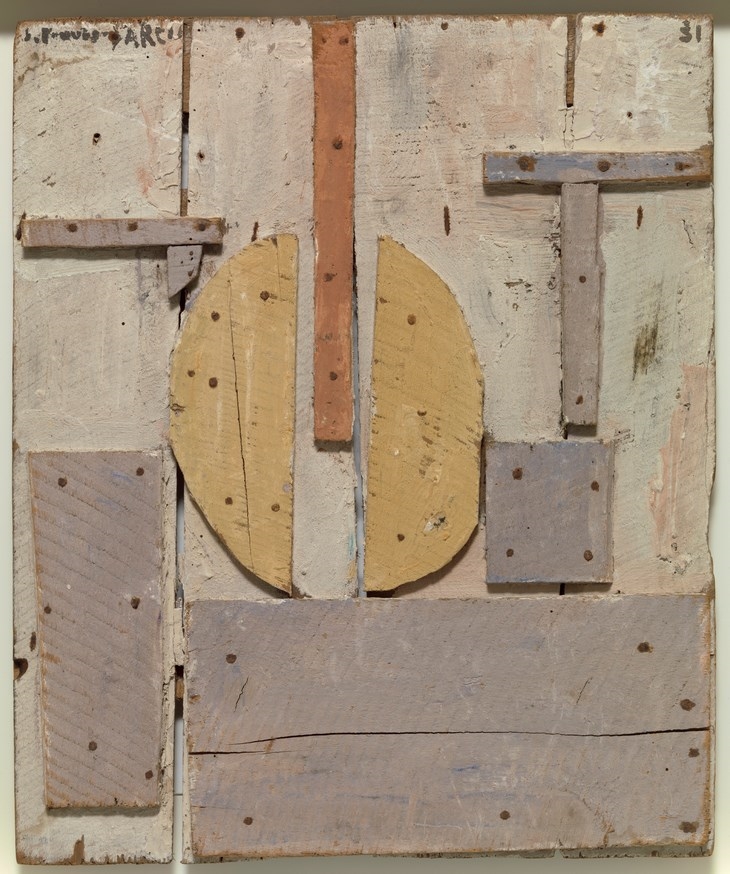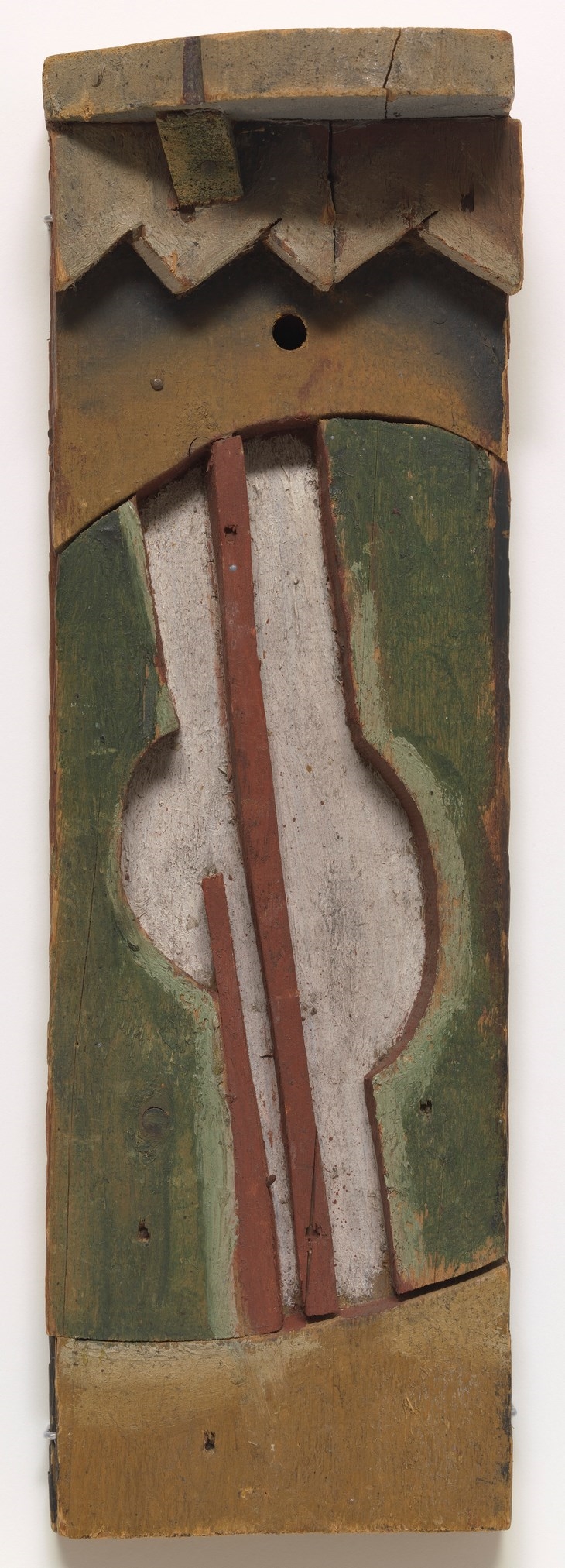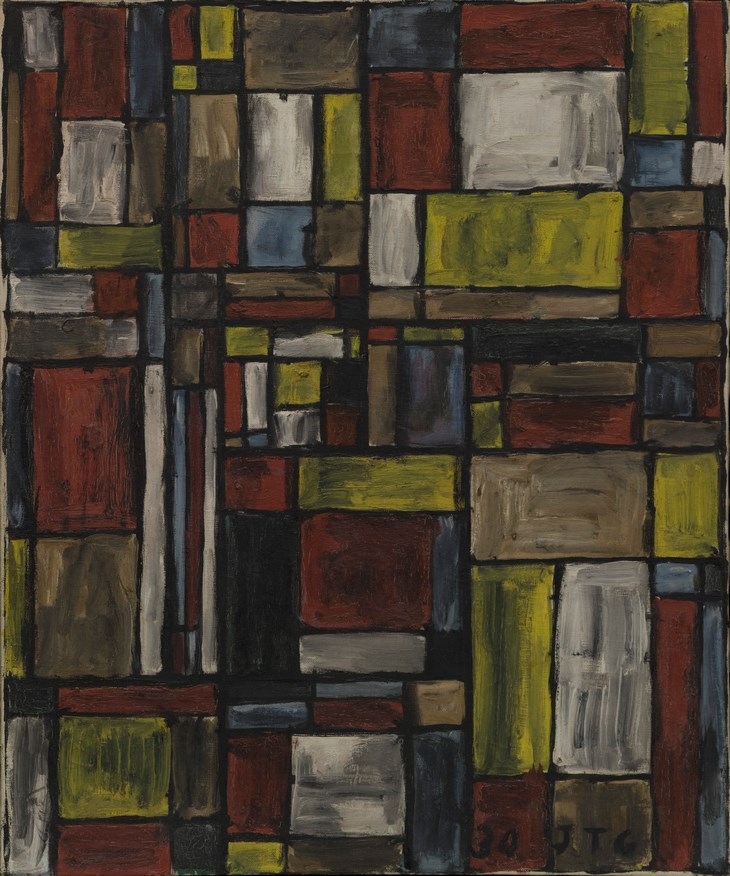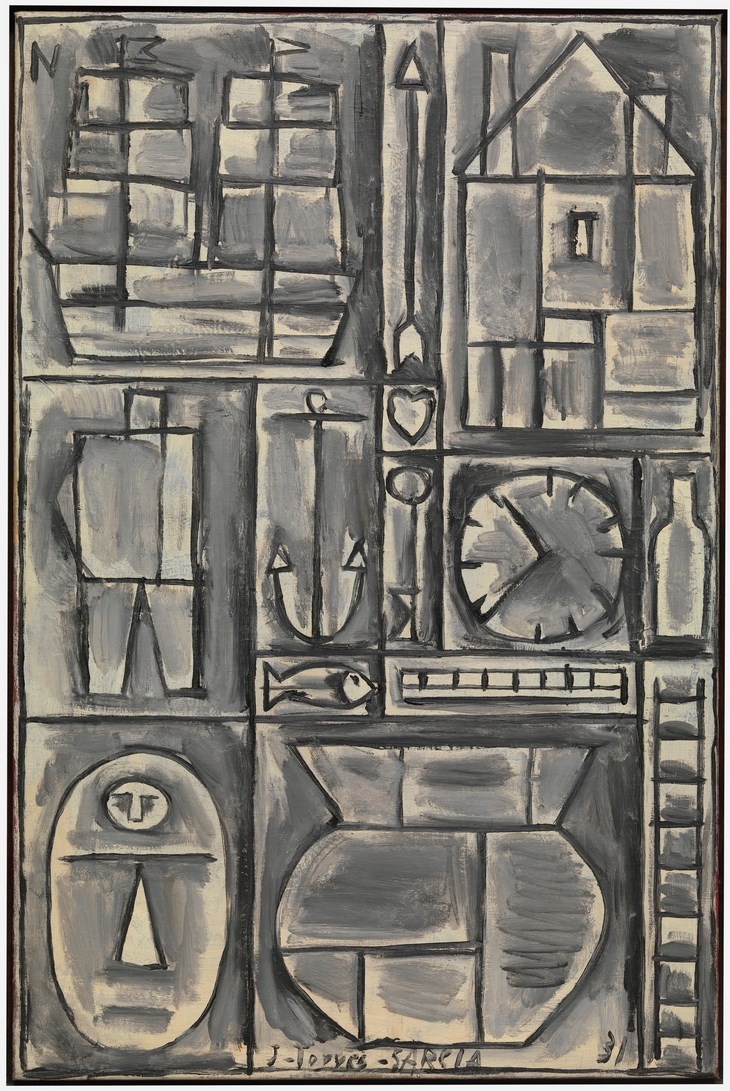The Museum of Modern Art presents a major retrospective devoted to the art of Joaquín Torres-García (Uruguayan, 1874–1949). The exhibition comprises works ranging from the late 19th century to the 1940s, and includes drawings, paintings, objects, sculptures, and original artist notebooks and rare publications.
This retrospective unfolds as a survey combining a chronological display with a thematic approach, structured in a series of major chapters embracing the artist’s entire oeuvre with emphasis on two key moments: the period from 1923 to 1933, when Torres-García participated in various European early-modern avant-garde movements while establishing his own signature pictographic-constructivists style; and 1935 to 1943, when he produced one of the most striking repertoires of synthetic abstraction upon his return to Uruguay.
Torres-García is one of the most complex and emblematic modern masters from the first half of the 20th century, and his work laid out transformational paths for modern art on both sides of the Atlantic. Manifesting a profound impulse toward arcadic, primitive, and schematic forms alongside a permanent fascination with the notion of utopia, he participated in some of the most crucial intellectual and artistic discussions of the past century. His personal involvement with a significant number of early avant-garde movements, from Catalan Noucentismo to Cubism, Ultraism-Vibrationism, and Neo-Plasticism, make him an unparalleled figure deserving of a comprehensive critical reevaluation in the U.S.
Cover photo credits: Joaquín Torres-García (Uruguayan, 1874–1949). Construction in White and Black. 1938. Oil on paper mounted on wood. 31 3/4 x 40 1/8″ (80.7 x 102 cm). The Museum of Modern Art, New York. Gift of Patricia Phelps de Cisneros in honor of David Rockefeller. Photograph by Thomas Griesel © 2015 Joaquín Torres-García
 JOAQUÍN TORRES GARCÍA (URUGUAYAN, 1874?1949). CONSTRUCTION WITH CURVED FORMS. 1931. OIL AND NAILS ON WOOD. 19 1/2 X 16 1/8 X 1/2? (49.5 X 41 X 1.3 CM). THE MUSEUM OF MODERN ART, NEW YORK. GIVEN ANONYMOUSLY, 2012. PHOTO THOMAS GRIESEL.
JOAQUÍN TORRES GARCÍA (URUGUAYAN, 1874?1949). CONSTRUCTION WITH CURVED FORMS. 1931. OIL AND NAILS ON WOOD. 19 1/2 X 16 1/8 X 1/2? (49.5 X 41 X 1.3 CM). THE MUSEUM OF MODERN ART, NEW YORK. GIVEN ANONYMOUSLY, 2012. PHOTO THOMAS GRIESEL. JOAQUÍN TORRES GARCÍA (URUGUAYAN, 1874?1949). GUITAR. 1924. PAINTED WOOD. 12 1/2 X 4 X 3 1/8? (37.7 X 10 X 7.7 CM). THE MUSEUM OF MODERN ART, NEW YORK. ABBY ALDRICH ROCKEFELLER FUND, 1981. PHOTO THOMAS GRIESEL.
JOAQUÍN TORRES GARCÍA (URUGUAYAN, 1874?1949). GUITAR. 1924. PAINTED WOOD. 12 1/2 X 4 X 3 1/8? (37.7 X 10 X 7.7 CM). THE MUSEUM OF MODERN ART, NEW YORK. ABBY ALDRICH ROCKEFELLER FUND, 1981. PHOTO THOMAS GRIESEL. JOAQUÍN TORRES GARCÍA (URUGUAYAN, 1874?1949). COLOR STRUCTURE. 1930. OIL ON CANVAS. 24 X 20? (61 X 50.8 CM). THE MUSEUM OF MODERN ART, NEW YORK. THE SIDNEY AND HARRIET JANIS COLLECTION (BY EXCHANGE), 2004. PHOTO JONATHAN MUZIKAR.
JOAQUÍN TORRES GARCÍA (URUGUAYAN, 1874?1949). COLOR STRUCTURE. 1930. OIL ON CANVAS. 24 X 20? (61 X 50.8 CM). THE MUSEUM OF MODERN ART, NEW YORK. THE SIDNEY AND HARRIET JANIS COLLECTION (BY EXCHANGE), 2004. PHOTO JONATHAN MUZIKAR. JOAQUÍN TORRES GARCÍA (URUGUAYAN, 1874?1949). COMPOSITION. 1931. OIL ON CANVAS. 36 1/8 X 24? (91.7 X 61 CM). THE MUSEUM OF MODERN ART, NEW YORK. GIFT OF LARRY ALDRICH, 1956. PHOTO THOMAS GRIESEL.
JOAQUÍN TORRES GARCÍA (URUGUAYAN, 1874?1949). COMPOSITION. 1931. OIL ON CANVAS. 36 1/8 X 24? (91.7 X 61 CM). THE MUSEUM OF MODERN ART, NEW YORK. GIFT OF LARRY ALDRICH, 1956. PHOTO THOMAS GRIESEL.READ ALSO: EXAMINING THE FORM OF BOOK: CLOUD 27.09.2015 - 04.10.2015, EXARCHEIA, ATHENS